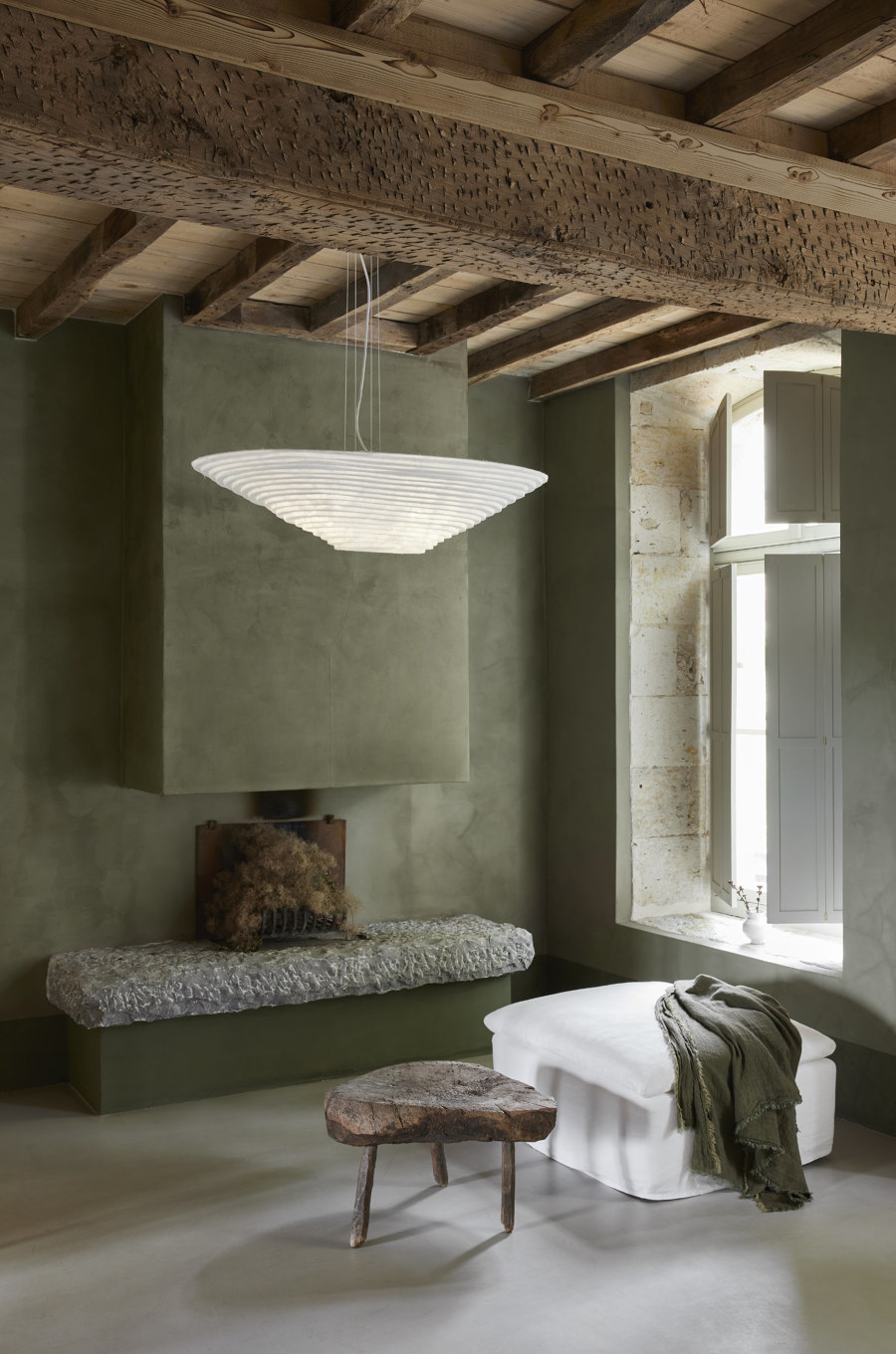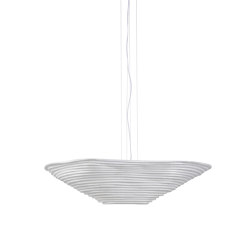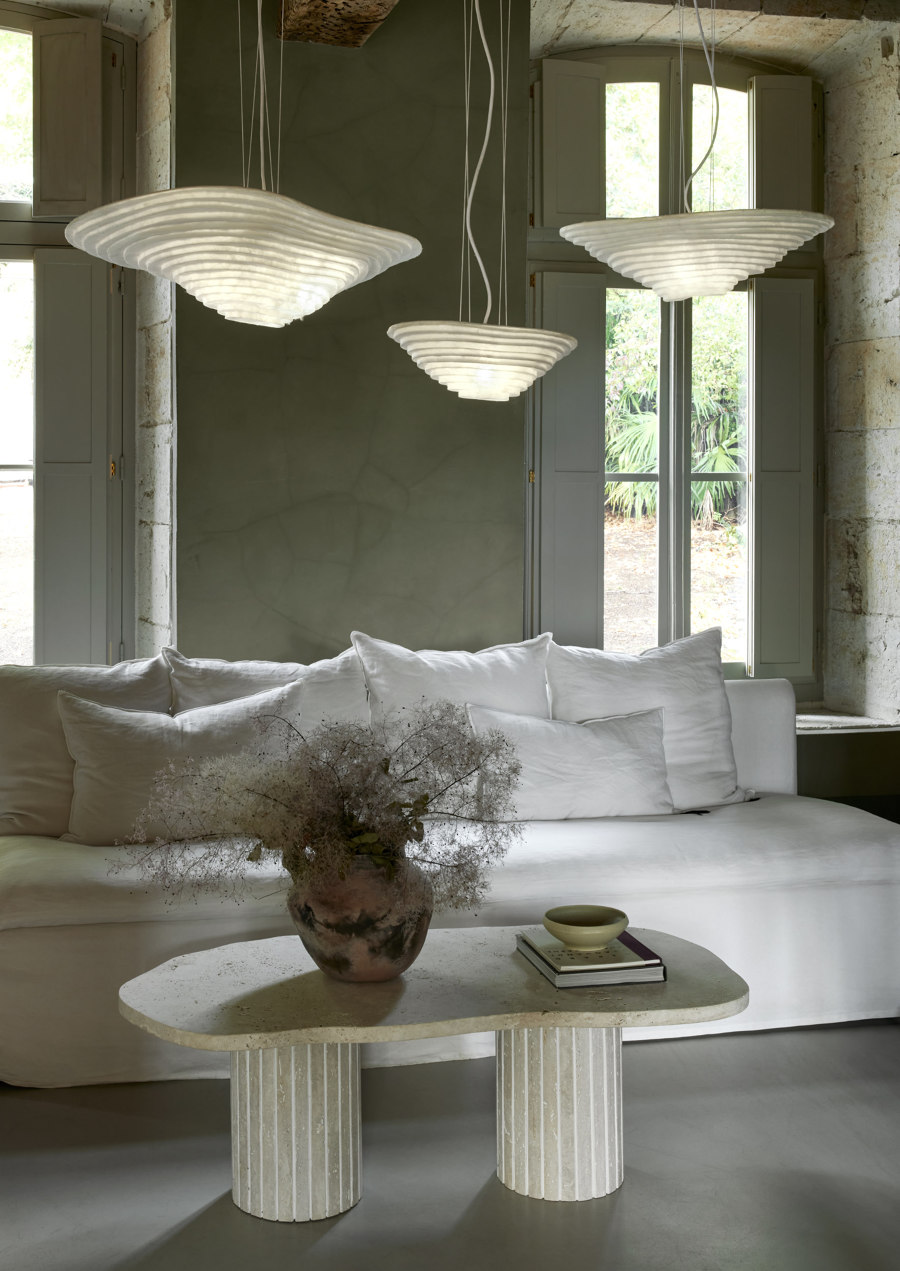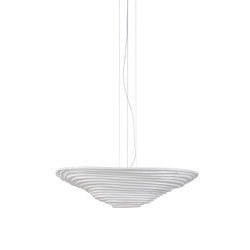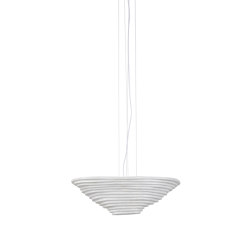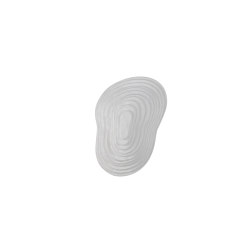Nebulis by Forestier: new lighting from centuries-old materials
Brand story by Emma Moore
Bègles, France
23.11.23
French lighting brand Forestier leverages the natural qualities of silk with innovative manufacturing techniques to create its sculptural, gossamer-light Nebulis family of luminaires.
Forestier is on a mission to bring us poetic lighting inspired by nature and made from nature’s materials. Elise Fouin’s Nebulis pendants and sconces are the latest to join the family
The need for natural materials to usurp synthetics in our homes is driving innovation in all areas of design. Typically high on plastic and glass content, lighting is particularly up for scrutiny. While some have provocatively returned to the likes of animal bladders in search of organic translucency, others have looked to natural fibre favourites rattan, cane and linen. For others, it’s a matter for minerals such as alabaster, whose properties allow for beautiful ambient diffusion of light. And the search goes on.
Joining the quest for earth-friendly translucency is French designer Elise Fouin, a one-time member of Andrée Putman’s studio. Nebulis, her latest design for Paris-based lighting makers Forestier, follows her successful airy creations for the brand, the Papillon and Libellule collections, both inspired by ethereal nature. Nebulis, on the other hand, is made by nature, in a gossamer-light yet solid form.
Constructed from un-woven silk from France's historical silk-producing region, Cévennes, using modern methodology, Nebulis’s cloud-like pieces are both inspired and made by nature
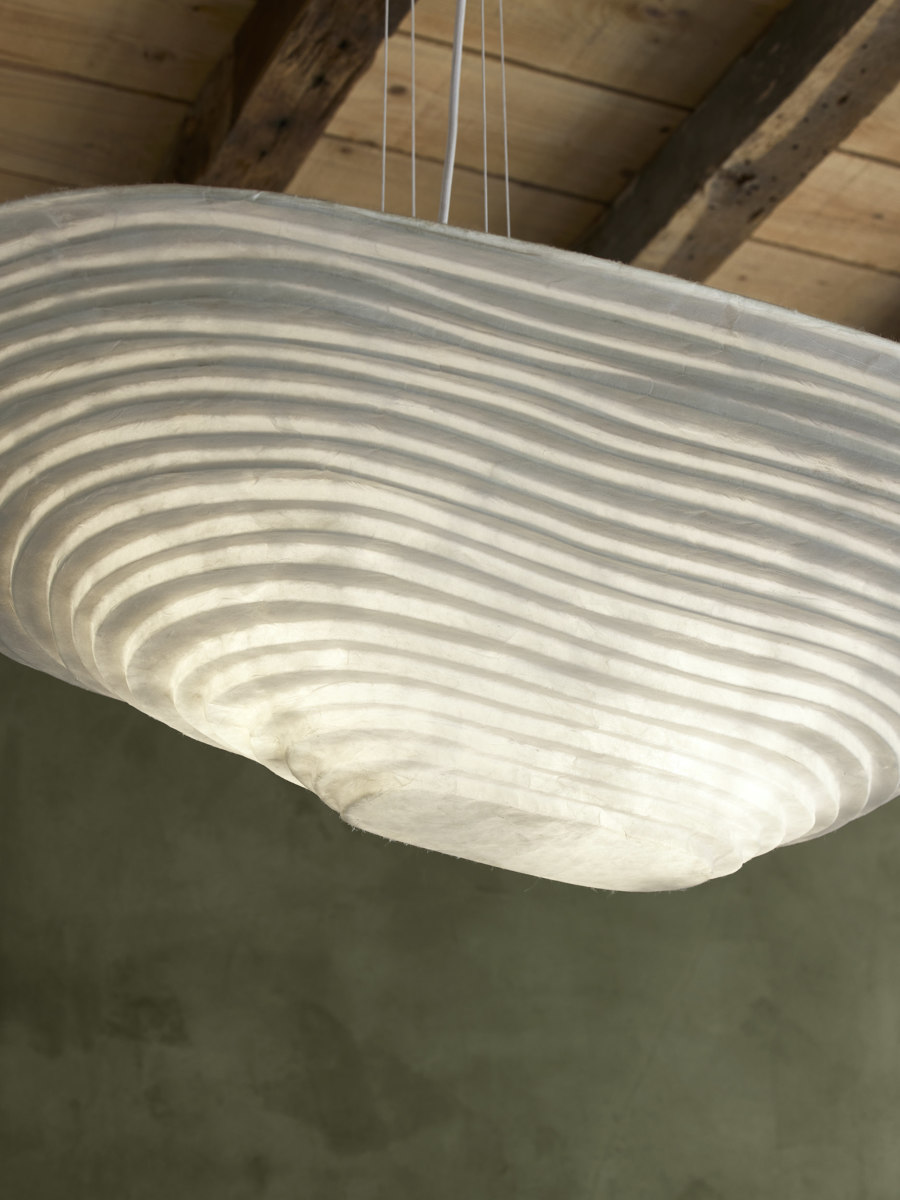
Constructed from un-woven silk from France's historical silk-producing region, Cévennes, using modern methodology, Nebulis’s cloud-like pieces are both inspired and made by nature
×An age-old material reworked for modern times
Nebulis resulted from the research-led textile innovator Sericyne. Set up by the Boulle school graduate Clara Hardy, Sericyne explores inventive new ways to process silk – spun in the centuries-old silk-producing area of Cévennes in southern France – into modern materials with new applications.
It brings us a poetic new piece of lighting that doesn’t challenge the carbon balance. What’s not to like?
Rethinking how silk transforms into a malleable material, Sericyne, which has headquarters at Parisian brand incubator space Station F and a production workshop in Monoblet in the heart of Cévennes, has merged the making of silk with the making of product. The multi-disciplinary team has devised a way for the silkworms to spin their threads directly over moulds, so that a light, translucent layer is naturally formed in 3D. Alternatively, the worms spin their fibres in a flat meshed layer which can then be applied in pieces by hand over a mould.
Unwoven silk is applied in layers by hand to moulds of different shapes and sizes, but always with sculptural stepped contours. Nebulis is at the same time graphic and organic in shape
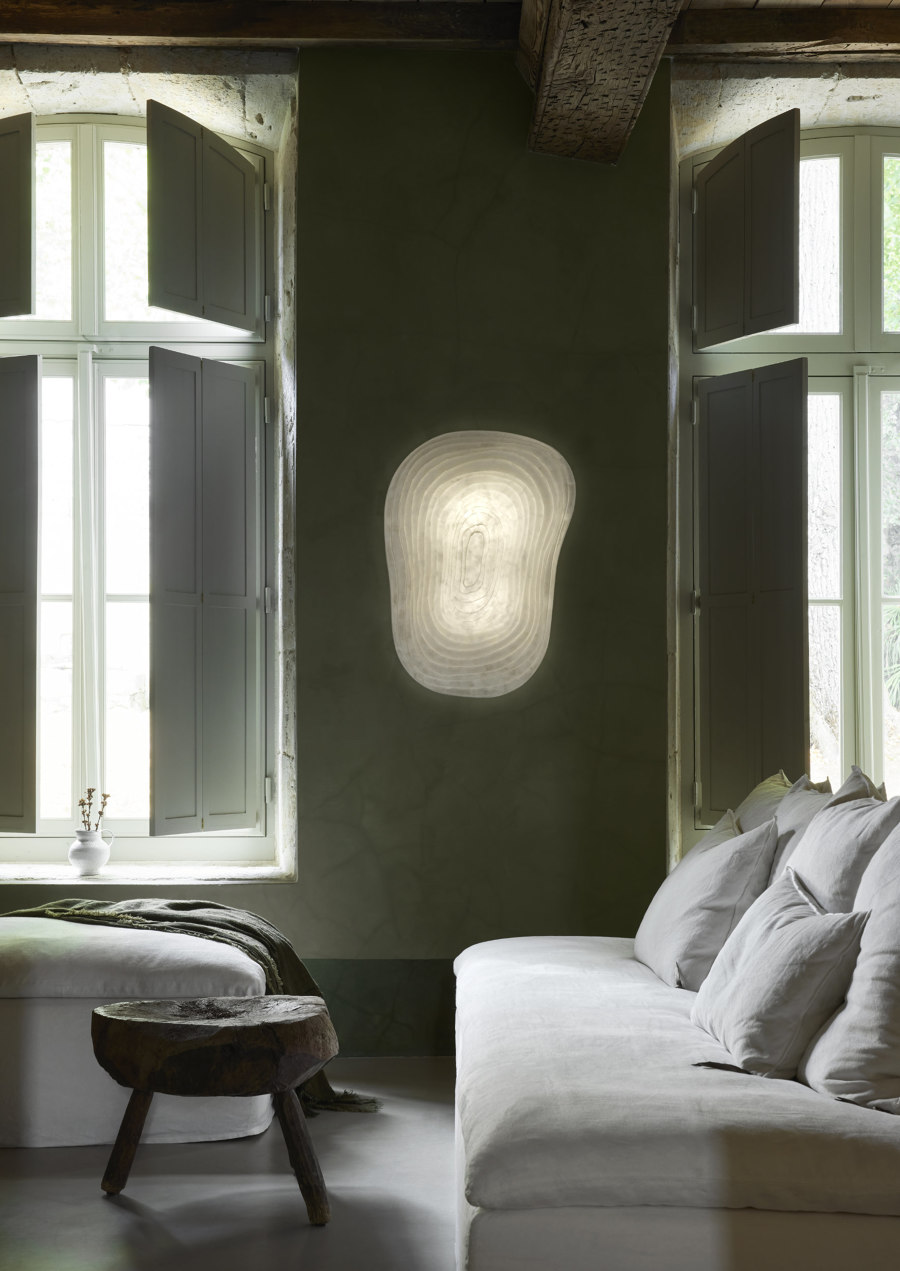
Unwoven silk is applied in layers by hand to moulds of different shapes and sizes, but always with sculptural stepped contours. Nebulis is at the same time graphic and organic in shape
×Material first, then comes form
It’s a material and process that captivated Fouin and equally seduced Forestier, a lighting company that champions natural materials and hand-making. ‘When I discovered Sericyne silk, it reminded me of Japanese washi paper but with more resistant qualities, while remaining very light in terms of weight,’ says the designer. ‘I found this innovation in the process of using silk alongside the material’s simultaneous lightness and solidity perfect to apply to the field of lighting design.’
‘I found this innovation in the process of using silk alongside the material’s simultaneous lightness and solidity perfect to apply to the field of lighting design’
Fouin, in fact, goes against the grain in her design process, often investigating material before form. The tactility, the visuals and the properties of the material then come to inform the shape of her design. ‘The material, the manufacturing techniques and the life cycle of the material is a great source of inspiration for me,’ she explains. ‘The form then comes into my head once I have been able to digest all these aspects.’
The uniqueness of Nebulis is its ability to be strong in shape and voluminous but unexpectedly lightweight and delicate in finish, making it ideal for hanging both as pendants and on walls as sconces
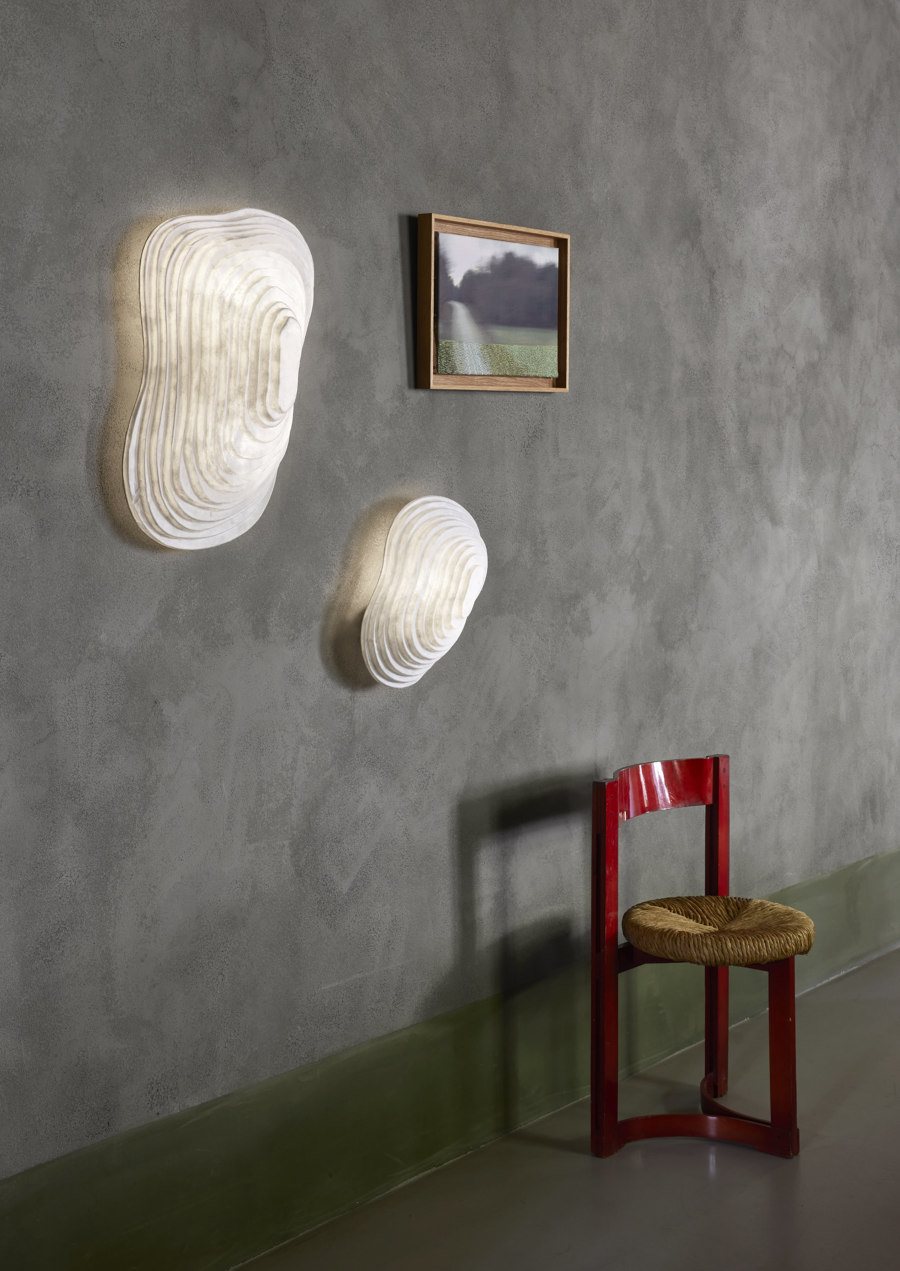
The uniqueness of Nebulis is its ability to be strong in shape and voluminous but unexpectedly lightweight and delicate in finish, making it ideal for hanging both as pendants and on walls as sconces
×Weightless volume naturally
From Fouin’s exploration into Sericyne’s non-woven silk, the form of Nebulis evolved into terraced mounds that suspend cloud-like as pendants, or sit flush to the wall or ceiling like luminescent sculptures. For reasons of time-efficiency, the meshed threads were applied in pieces to the moulds in light layers rather than spun over them, before being left to set and then lifted off the moulds. The form has remarkable volume and structure combined with unexpected weightlessness.
The meshed silk threads produced by contemporary silk-makers Sericyne and applied to the Nebulis mould become a strong but translucent fibre that imparts a soft ambient glow
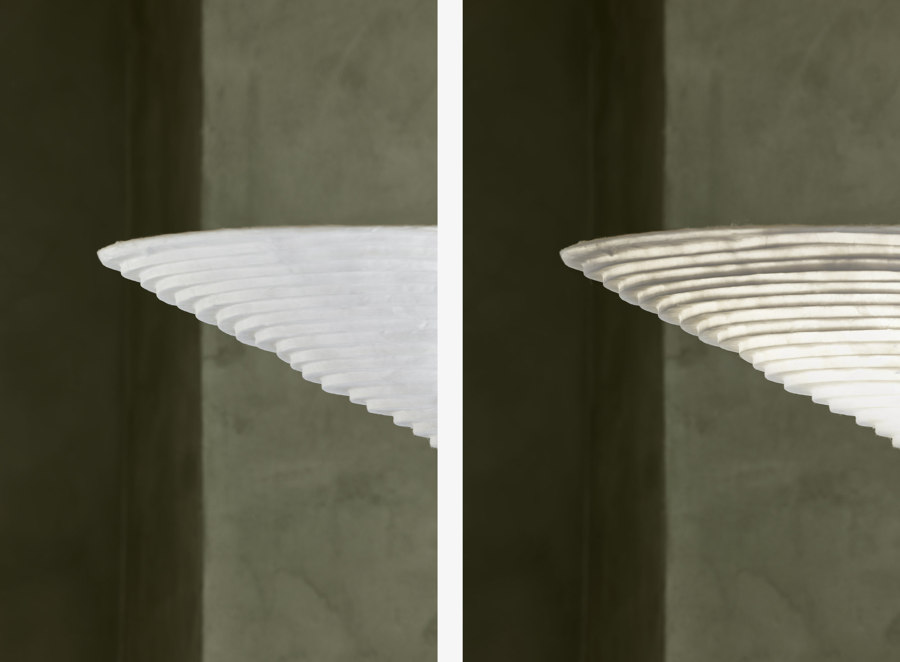
The meshed silk threads produced by contemporary silk-makers Sericyne and applied to the Nebulis mould become a strong but translucent fibre that imparts a soft ambient glow
×Forestier’s Nebulis ticks all the boxes of modern product design. It leans on the natural world and innovations in age-old materials. It picks up a heritage material – silk – from a place steeped in making expertise, and reworks it for modern-day usage. It puts to good use the properties of this new-but-old material; its translucency, lightness of weight but solidity of form. And it brings us a poetic new piece of lighting that doesn’t challenge the carbon balance. What’s not to like?
© Architonic
Head to the Architonic Magazine for more insights on the latest products, trends and practices in architecture and design.


